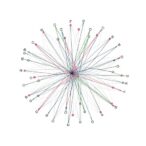Flagship Pioneering’s Lila Sciences has had little trouble finding supporters for its “scientific superintelligence” mission since its March debut. After closing a $235 million series A last month, Lila has now expanded the round with an additional $115 million, including funds from the venture arm of AI titan Nvidia.
Joining Nvidia’s NVentures wing in the extension are Analog Devices, IQT, Dauntless Ventures, Catalio Capital Management, Pennant Investors, investors from Peter Diamandis’ Abundance Membership and others, according to an Oct. 14 blog post written by Lila co-founder and CEO Geoffrey von Maltzahn, Ph.D.
“Our new investors bring technical collaborations to accelerate our global growth plans, conviction in Lila’s role in national security and U.S. resilience from materials discovery touching computing, energy and infrastructure, and deep appreciation of the hardest problems in healthcare, therapeutics, diagnostics and longevity,” von Maltzahn wrote.
Last month’s series A tranche, led by Braidwell and Collective Global, already exceeded the startup’s red-hot March debut of $200 million. Lila’s total fundraising has now eclipsed half a billion dollars, demonstrating that the company’s goal of automating scientific research with AI and robotic labs is resonating with investors.
Related
Lila’s impressive haul this year will advance the AI outfit’s work in four core areas, von Maltzahn said in the release. These are “superhuman scientific performance;” building more automated labs, which Lila calls AI science factories; bringing in the company’s first customers; and hiring “the world’s most brilliant minds,” the CEO said.
In the first series A announcement in September, von Maltzahn revealed that Lila is constructing new AI science factories in Boston, London and San Francisco. These facilities are meant to “generate hypotheses, design experiments, run them, learn from the results and iterate,” von Maltzahn said at the time. In other words, they are meant to perform the scientific method autonomously.
Lila has claimed several times that its tech has already achieved big things in biotech R&D, including large language models with top-notch scientific reasoning abilities; genetic medicine constructs that outperform those already on the market; and hundreds of new antibodies, peptides and binders that hit a range of therapeutic targets.
The company has not yet publicly released any data to support the claims.



